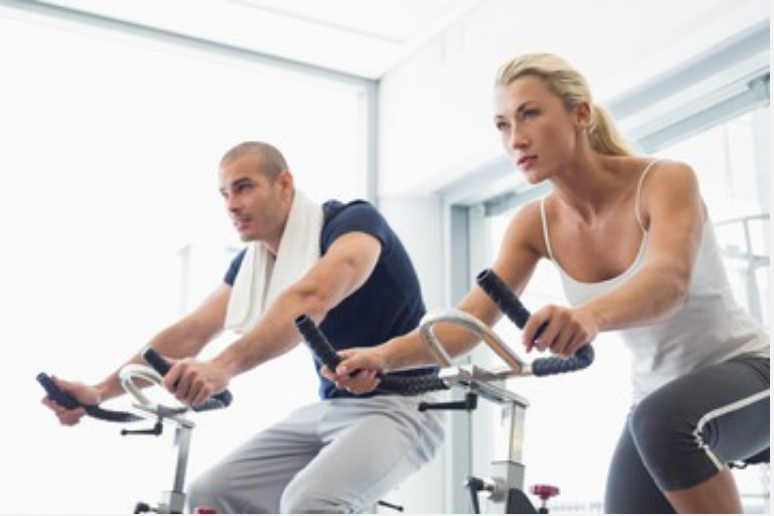Ever thought about how your workout routine might need a tweak after a hormone pellet insertion? It’s not as straightforward as lacing up your sneakers and hitting the treadmill. Your body’s like a finely tuned machine, and it needs careful handling, especially when there’s been a change in your hormone levels.
Exercise can be a great way to feel good and stay healthy, but post hormone pellet insertion, it’s crucial to consider the intensity and safety. It’s all about balance – finding that sweet spot between staying active and avoiding complications. So, let’s talk about what you need to know when it comes to exercising after hormone pellet insertion.

Contents
What is Hormone Pellet Insertion?
Hormone pellet insertion is a procedure used in hormone replacement therapy (HRT) to deliver bioidentical hormones, which are hormones that have the same chemical structure as those naturally produced in the body. These pellets are typically made from plant-derived materials and are about the size of a rice grain.
During the insertion procedure, a healthcare professional will numb a small area of skin, usually in the buttocks or upper hip. They will then make a tiny incision and insert the pellets under the skin. The incision is then closed with stitches or sterile-strips.
The pellets slowly release hormones into the bloodstream over several months, depending on the individual’s metabolism and the dose inserted. This can help to alleviate symptoms of hormone deficiency, such as hot flashes, night sweats, vaginal dryness, and low libido.
When Can You Exercise After Hormone Pellet Insertion?
Exercise restrictions after hormone pellet insertion vary slightly depending on your gender and the specific instructions from your healthcare provider. Here’s a general guideline:

-
First 1-2 days: Take it easy and avoid strenuous activity. This is crucial to allow the insertion site to heal and prevent the pellets from dislodging.
-
Women (Days 3-5): You can gradually introduce light exercises like walking or yoga. Avoid high-impact activities that could put a strain on the insertion area.
-
Men (Days 3-7): Similar to women, focus on light exercise during this period. Avoid activities that engage the gluteal muscles heavily, such as stair steppers, ellipticals, or cycling.
-
Heavier exercise (Everyone): For activities like weightlifting or high-intensity interval training, it’s generally recommended to wait at least two weeks after the procedure. This allows the pellets to settle securely.
Listen to your body: Everyone heals at their own pace. It’s important to pay attention to your body and avoid any exercise that causes pain or discomfort at the insertion site.
Benefits of Exercising After Hormone Pellet Insertion
There are several benefits to exercising after hormone pellet insertion, once you’re past the initial healing period:

-
Improved Blood Flow and Hormone Distribution: Exercise gets your blood pumping, which helps distribute the hormones released by the pellets more efficiently throughout your body. This can lead to quicker positive effects from hormone replacement therapy, like increased energy and reduced hot flashes.
-
Enhanced Results: Studies suggest that combining hormone replacement therapy with exercise can maximize its benefits. Exercise can improve muscle tone, reduce fat mass, and increase lean body mass, all of which contribute to a healthier body composition.
-
Weight Management: Exercise helps you burn calories and can be a valuable tool for managing weight, which can be a concern for some undergoing hormone therapy.
-
Reduced Stress: Exercise is a well-known stress reliever. Hormone imbalances can sometimes contribute to feelings of anxiety or stress. Physical activity can help combat these feelings and improve your overall mood.
-
Improved Bone Health: Weight-bearing exercises like walking, jogging, or strength training can help improve bone density, which is important for preventing osteoporosis, a condition that can be more common with hormonal changes.
-
Increased Energy Levels: Hormone imbalances can often lead to fatigue. Regular exercise can boost your energy levels and help you feel more revitalized.
Overall, exercise can play a significant role in supporting the positive effects of hormone pellet insertion and contribute to your overall well-being.
Types of Exercises to Consider
When choosing exercises after hormone pellet insertion, it’s important to consider both the healing stage and your overall fitness level. Here’s a breakdown of exercises suitable for different stages:

Initial Healing (First 1-3 Days):
Rest and Light Activity: Focus on allowing the insertion site to heal. Gentle walks, light yoga stretches, or simple bodyweight exercises like arm raises can promote circulation without strain.
Gradual Reintroduction (3-7 Days, Depending on Gender):
Low-Impact Exercises: Gradually introduce activities that elevate your heart rate but don’t put excessive stress on the insertion area. Examples include:
- Walking (gradually increase duration and pace)
- Stationary cycling (avoid high resistance)
- Swimming (excellent low-impact option)
- Elliptical trainer (use low resistance and avoid high steps)
- Light yoga or Pilates (focus on gentle stretches and bodyweight exercises)
When You’re Ready for More (After 2 Weeks, with Doctor’s Approval):
Strength Training: This can be crucial for maintaining muscle mass, which can be affected by hormonal changes. Start with light weights or bodyweight exercises and gradually increase intensity as tolerated. Focus on exercises that don’t heavily target the glutes (early on for men, throughout for everyone).
Cardio: You can introduce higher-intensity activities like jogging, running, or faster cycling. Aim for moderate-intensity cardio for at least 150 minutes or vigorous-intensity cardio for 75 minutes per week according to the American Heart Association.
Precautions to Take Before Exercising
Here are some precautions to take before exercising, both generally and specifically after hormone pellet insertion:

General Precautions:
- Listen to your body: This is the most important precaution. If you’re feeling unwell, it’s best to rest and avoid exercise. Pay attention to any pain or discomfort during your workout and stop if anything feels off.
- Warm-up: A proper warm-up prepares your body for exercise and helps prevent injuries. Aim for 5-10 minutes of light cardio, like jogging in place or jumping jacks, followed by dynamic stretches that mimic the movements of your planned workout.
- Hydrate: Drink plenty of water before, during, and after your workout. Aim for 16-20 ounces of water 2 hours before exercise, and then sip fluids throughout your workout to replace fluids lost through sweat.
- Eat for energy: If you’re exercising on an empty stomach, you might feel sluggish. Depending on the intensity of your workout, you may want to have a small snack 30-60 minutes beforehand. Choose something easily digestible like a banana or a piece of toast with nut butter.
- Wear appropriate clothing and shoes: Wear comfortable, breathable clothing that allows for freedom of movement. Choose shoes that provide good support and are appropriate for your chosen activity.
Precautions After Hormone Pellet Insertion:
- Follow doctor’s instructions: As mentioned previously, strictly follow the specific exercise restrictions and recommendations provided by your healthcare professional after your procedure.
- Start slowly: Don’t jump back into your pre-insertion workout routine immediately. Gradually increase the intensity and duration of your workouts as your body heals.
- Avoid strenuous activity: Especially during the first 1-2 days after insertion, avoid any exercises that put a lot of strain on the insertion site, such as heavy lifting, jumping, or high-impact activities.
- Focus on low-impact exercises: During the initial healing stages and for men even a bit longer, prioritize low-impact exercises like walking, swimming, or light yoga.
- Be mindful of the insertion site: Avoid exercises that put direct pressure on the insertion area, especially during the first week or two.
By following these precautions, you can help ensure a safe and enjoyable return to exercise after hormone pellet insertion.
Frequently Asked Questions
When can I start exercising after hormone pellet insertion?
The initial 24-48 hours post pellet insertion should be restful; resist strenuous activities. Most of you can resume regular workout regimes within a week or less, but each person’s recovery varies. Always listen to what your body says.
Why do my breasts feel tender after hormone pellet insertion?
The tenderness in your breasts, along with possible swelling or nipple sensitivity, is usually a side effect of increased estrogen levels which drives more blood to the breast tissue. While beneficial for the tissue, this increase may cause discomfort.
What causes hormone pellets to extrude?
Avoid vigorous activities for 48 hours (women) and 5-7 days (men) post pellet insertion. Rigorous physical activity soon after the procedure could lead to ‘extrusion’, a condition where the pellet works its way out of the insertion spot.
Can hormone pellets lead to weight gain?
Though minor weight fluctuations may be experienced during hormone optimization, research suggests that bioidentical hormone replacement therapy does not directly cause significant weight gain.
What should I expect after hormone pellet insertion?
Most individuals feel more energetic, and happier, and enjoy better sleep post-pellet insertion. There’s also an increase in muscle mass and bone density, while fatty tissue decreases. This might lead to noticeable enhancements in strength, coordination, and overall physical performance.

Hello, I’m Ravindra. Over the years, I’ve immersed myself deeply into the world of fitness and health, transforming both my body and mind. Writing has allowed me to share my journey, insights, and expertise with those just starting out and seasoned fitness enthusiasts alike. Beyond just routines and diets, I believe in inspiring others to adopt a holistic approach to well-being.
